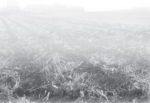Understanding Vertical Tillage
The yield-robbing effects of soil compaction continue to be a major challenge for growers, but proponents of deep-tilling say they have an answer for returning compacted soils to fertile, highly productive acres.
Read More










